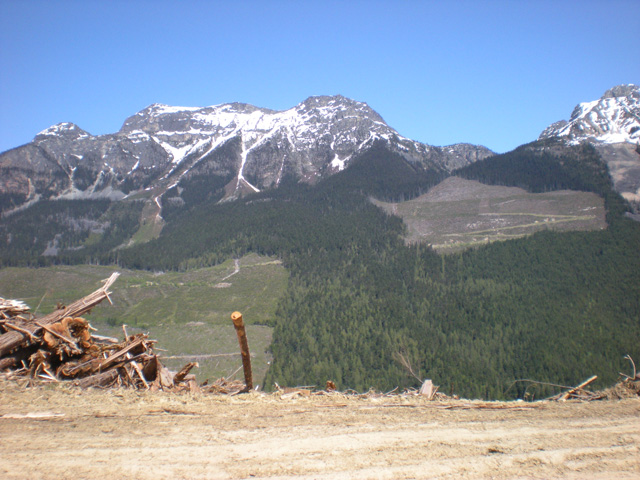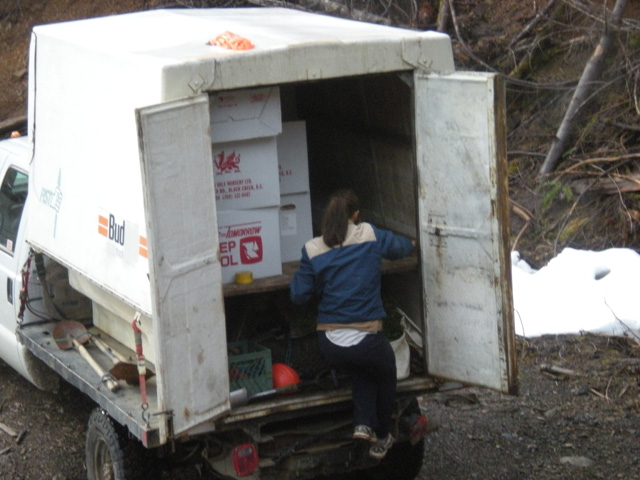This is the year where prices will prosper and fires will be replanted via government funding.
Treeplanting jobs in BC vary dramatically. One day, you could be in a helicopter and dropped off onto a hollow stump on a steep block with barely any dirt, while the next day you could be in the valley flats with no obstacles and perfect soil. As far as our 2021 planting season is concerned, we are always hiring!
With that said, the next set of information will attempt to explain some information about planting trees in BC throughout a full treeplanting season in 2021.
Planters In a Typical Work Season
It is now Feb or March, and you have an actual starting date for the first contract that will start on Vancouver Island. At this point, you have likely chatted with your boss and know the ins and outs of the job. For example, the contract will consist of planting 500,000 trees for which 150,000 will need to be planted with tea bags. On top of that, this planting job will contain about 10 days of helicopter work in helicopter blocks. Asides from those details, about 50,000 of the trees will need to be sprayed with pigs blood and 20,000 will need plant protectors called cones.
You have those details in your mind and it all seems pretty straight forward with the exception that nature can cause all sorts of uncomfortable situations and downtime. You could check in to your first motel, then two days later you could be snowed out for a week. Hopefully, the contract has a fair bit of low elevation work and experienced supervisors who seek to plant as high as possible first to ensure the least amount of down time.
Packing For The Contract
Since the first two months will be solid coastal work, you know you must have solid caulk boots to start the season. If not, your footwear will cost you production and energy. In addition to footwear, you will need quality rain-gear and perhaps polypropylene top and bottoms, gloves, hats and toques and a good bag. Many experienced planters go to the job with Sealine® diver packs. Within the backs, you have some planters who bring very little while you have the prepared that have changes of gloves between runs and changes of clothes.
On top of clothing, you will need the tools for the job; like shovel(s) and bags. many keen planters have various shovels and use them depending on the situation and size of the tree plug(root system).
Asides from packing for the job, you will pack according to your needs. For example, some planters will hop on a bus with personal items consisting of 1 jacket, a couple of changes of clothes and maybe a personal grooming kit with shampoo, razors and a toothbrush. On the other hand, some may have loaded the truck and car to the max and have packed special cooking items, recreational items and hobby items like a laptop.

On the Road
Once the planter is in transit to the job, he normally will find his way to a hotel, cottage or remote camp. Remote camps can leave planters stranded in the middle of nowhere for weeks on end. Some could get the odd day off and go to town, but, many will just stay there and rest until the job is completed.
At this point, people often catch up or make new friends and acquaintances. Then, the Supervisors normally inform everyone about the work schedule, conditions and first aid. Here is where you hear details like we have about 50% green blocks and the rest are not. A green block means the block is a recent cut and the tree needles are still green since they have not had a year or so to decompose.
Doing to the BC Planting Job
On the first day of work, the day seems very long and there is usually some level of planting rust and lack of physical shape. As each day passes, everything becomes rather routine.
As the work days proceed, the planter will need to adjust to various work specifications such as planting specific trees in specific locations. Some checkers will want the trees in high spots while some will want you to choose the best medium as the first option. In addition to the specs, some are much more tolerant than others in terms of quality and spacing.
Since the weather on the coast can be very wet, being comfortable at work makes life easier. In addition to wet weather, some planters may work in small amounts of snow. Although uncommon, some companies will give the planters the option to work with a couple of inches or so on the ground. Although the weather is a huge factor on the coast, there are many goods parts like the lack of bugs and no green vegetation.
During the coastal planting season, you will stay in specific areas for long or short periods of time. It in not uncommon to move to many towns and new accommodations frequently.
Although some planting companies have very long coastal seasons that run through June, many have split Coastal and Interior seasons.
Interior Spring and Summer Planting
In many cases, the interior season starts near the end of April and now is when most of the BC tree planting jobs exist. The Interior stays colder than the coast during the winter and early spring, but, the climate for the Interior eventually shifts and the snow melts. When the interior season begins, University students and full time planters often invade BC clear cuts and plant millions and millions of trees.

In general, Interior planting is much easier and production is much higher than on the coast. On average, the price per tree is also less than the coast. But, that is not always the case because there are many regions in BC where the conditions are as tough and extreme. For example, Revelstoke has huge old growth clear cuts where the bottom 1/3 of the tree is often 'junk wood' and punky from being rotted out from the inside. Thus, the slash, devils club and huge 615D tree stock can be tough on the waist and legs; especially on steep hills.
When the Interior begins, the weather can vary from being hot right away to being very cold. As the season rolls on, it normally gets hotter and the bugs become worse. Depending on location, the bugs can be a real pain. Some use bug dope, head and body netting and other repellents while some use nothing but maybe a shirt tied up on the head.
The typical day of work is normally a drop of at the block or a drop off and a walk in. When trucks cannot get to their destination, quads, and if necessary, humans need to move trees to the planting site.
Since rain and muddy roads is often a fact of life, so are trucks getting stuck. A good driver knows how to avoid most of the problem spots and avoids mistakes, but, it really can get almost anybody. Normally, getting unstuck requires being pulled out by chain with another truck, or, by jacking it up and placing wood and rocks under the tires. Hopefully, there is radio contact and someone knows your situation because it could be 8:00 at dinner before somebody decides to start looking for you.
The Interior season can run into July. Some companies split their seasons up by calling one season 'Spring' and the other 'Summer'. Summer trees are hot lifted and will require special caching methods onsite to ensure they stay cool. The checker will often drive by and do a temperature test under the tarps.
Once a season comes to an end, all planters are often burnt out and relieved. People then say their 'goodbyes' and go their separate ways. Planters are quite a unique bunch. Some will go back to their yearly homes while others will travel or return to school.
Fall planting
Fall planting typically runs from mid-late August to October. However, planting in November is not unheard of. This season does have its moments in the Interior, but, it is dominant on the coast. Unlike the other seasons, it can be the most challenging for many reasons like lower planting prices, hot and humid weather, hornets and wasps and green vegetation.
Since there are less contracts in the fall than the spring, that fact can drive prices down. Meanwhile, when you do plant during these days, you never know when you will hit an underground or above ground bees nest. You could be trapped inside logs with a full bag up off trees and get multiple stings until you find yourself 10 feet from the nest.
Conclusion
That synopsis above explains the life of an experienced BC tree planter throughout various seasons. For a full time planter, the planting season could be around 100-160 days / year; give or take some days while a typical interior planter puts in around 40-70 days per year.

